Instructions: Removing red rust from a cast iron kettle
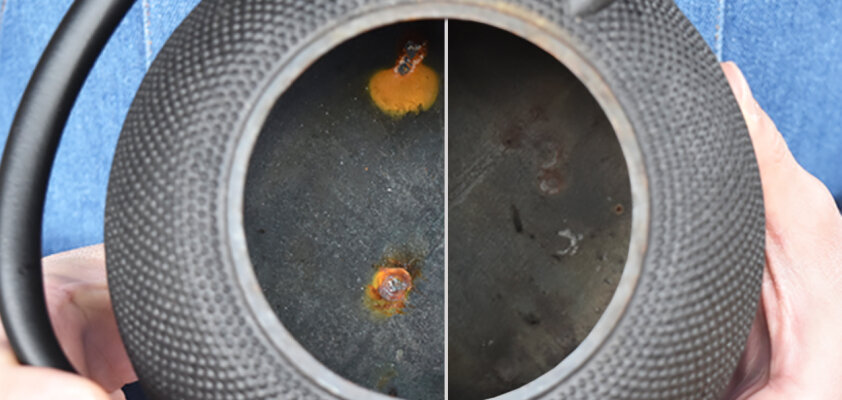
Concerning the fact that a traditionally crafted Japanese Tetsubin is not coated with enamel on the inside, tea enthusiasts are well aware. The possibility of rust, a chemical reaction when iron comes into contact with oxygen and water, is therefore always present in cast iron water kettles. But what to do if your own Tetsubin is affected by rust?
Red rust and black rust – what’s the difference?
First, determine the type of rust before deciding if it needs to be treated. The classic orange-brown rust, commonly found on metallic kitchen utensils, is called red rust.
Black rust is a bluish-gray oxide film that forms when a Tetsubin is heated during manufacturing at temperatures above 900°C. This process undergoes a chemical change responsible for the oxide film that covers the entire surface. Before cast iron water kettles are sold, they are externally dyed black for aesthetic reasons. The interior of the Tetsubin remains covered with the bluish-gray black rust and may be additionally treated to reduce the formation of red rust.
Step-by-step instructions for removing red rust:
Small, isolated spots of red rust are unproblematic. However, a very severe red rust infestation can impart a reddish color or a "metallic" smell to the boiled water. The water's aroma and the tea's taste could be affected. If the boiled water remains clear despite dark rust deposits and has no metallic taste, it can be used without issues.
Step 1: Sencha tea is suitable for rust removal in a Tetsubin due to its naturally occurring tannins. Place the Sencha tea leaves in a tea bag, or it can also be pre-brewed Sencha. Fill the water kettle to about 2/3 capacity with water and place the tea bag inside.
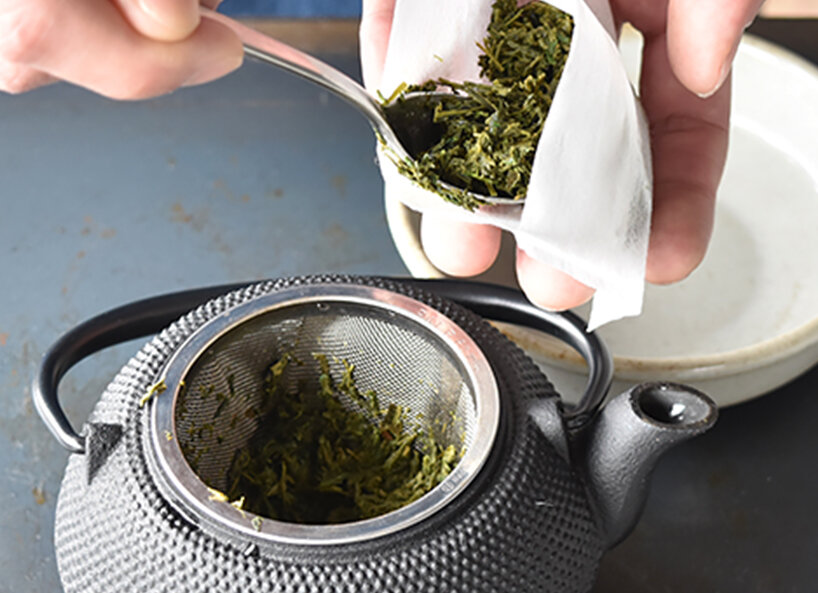
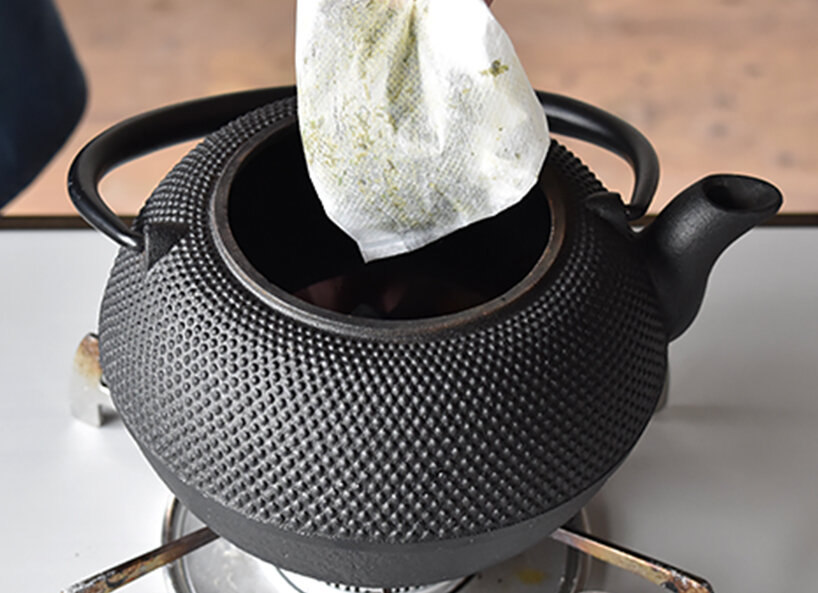
Step 2: Heat the kettle over low to medium heat, letting the water simmer gently for about 20 minutes. During the process, please set the lid aside to prevent boiling over.
Step 3: After the water and tea have boiled for 20 minutes, turn off the stove. The tea leaves contain tannins that react with rust, turning the water black.
Step 4: Refill the Tetsubin until it's full to compensate for the evaporated water. Let the kettle sit for half a day afterwards.
Step 5: Pour away the discolored water and the tea bag. Then, thoroughly rinse the kettle and boil water 2-3 times, discarding it each time. The last boiled water should be clear and without discoloration.
If you are satisfied with the condition of your Tetsubin, you just need to thoroughly dry it before storing to prevent rust from reoccurring. The best way to do this is by gently warming the kettle on the stove for a maximum of 30 seconds. The warm cast iron helps evaporate excess water.
By the way, boiling with hard water to create limescale, known as "Yakuku," protects your cast iron kettle from red rust. You can find a related blog post here.
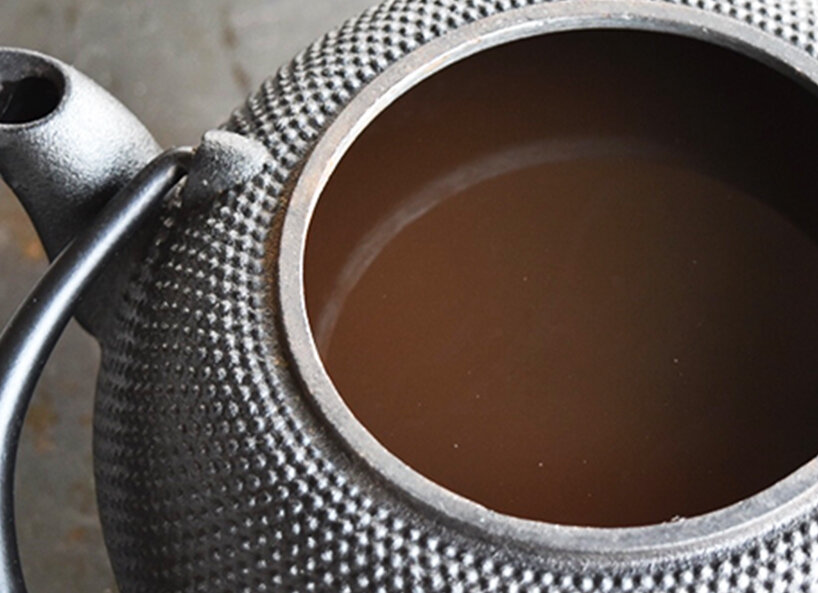
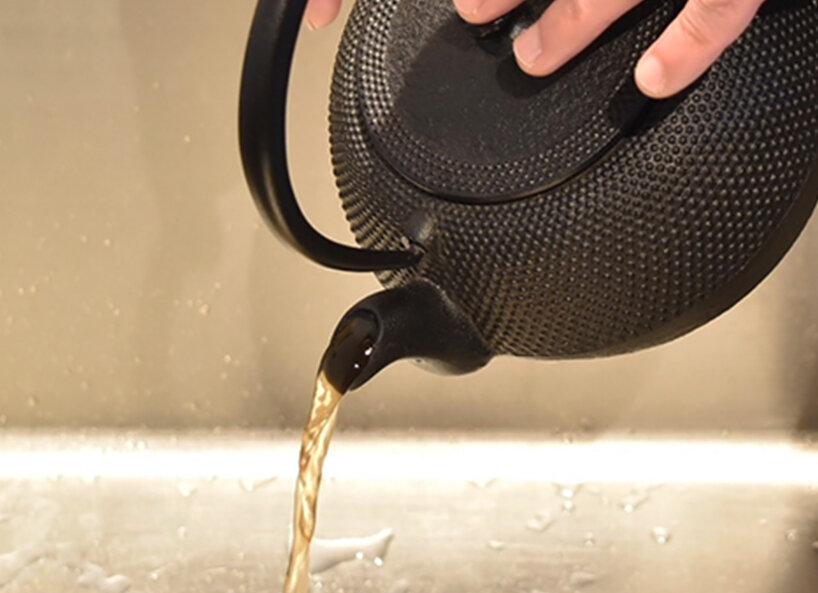

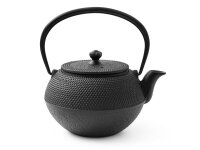
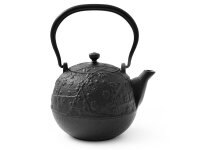
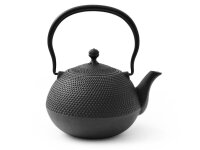
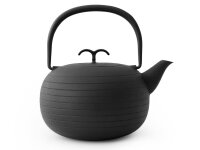
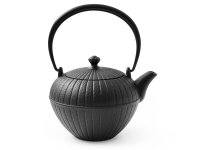
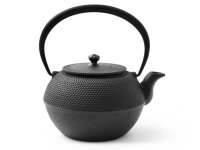
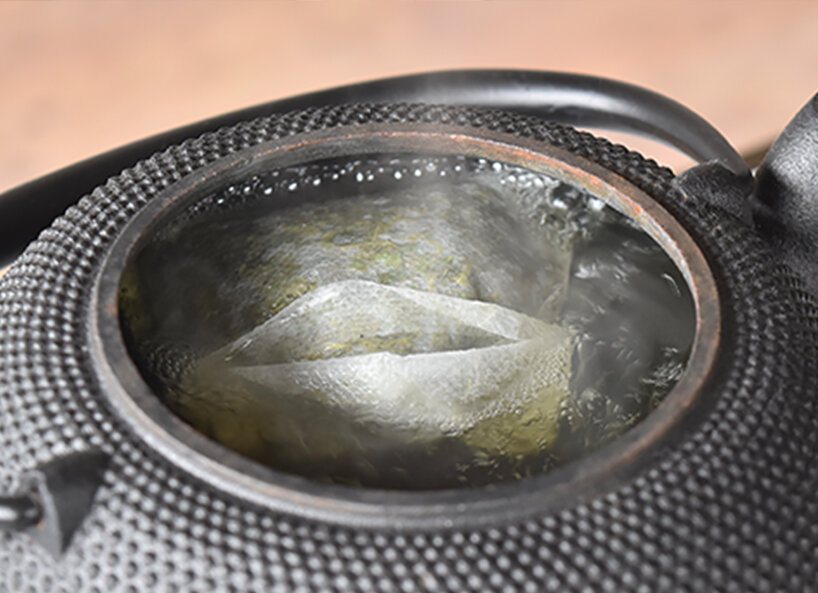
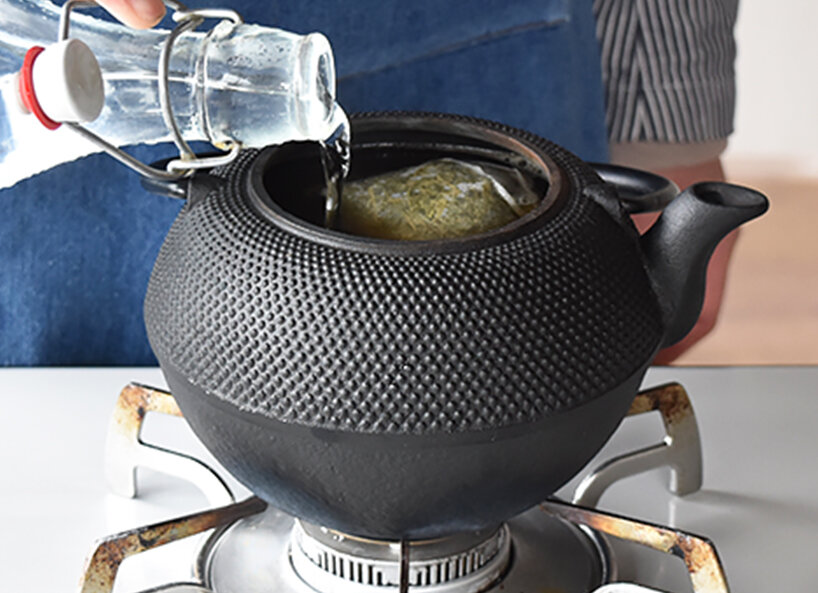










-from-the-yakiyaki-grill-pan.jpg)




